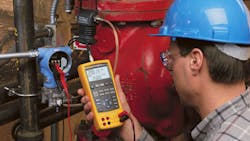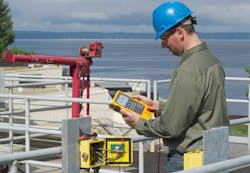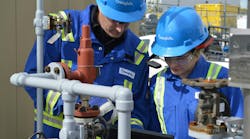Field calibration and troubleshooting tools for instrumentation used to be simple. Using these tools was a time-consuming process, but the tools themselves were not incredibly complicated. As technology evolves, so does the processes and tools that it touches. Maintenance technicians now have access to tools that offer enhanced accuracy, efficiency and convenience.
In the beginning: Basic tools and manual procedures
The early days of electrical maintenance required more manual processes. Technicians only had a limited set of tools available to them, most of which offered only basic measurements and were single function in design. These tools often included multimeters, oscilloscopes, signal generators and a variety of other hand tools. Troubleshooting and calibration were often time-consuming and required multiple tools and significant expertise to manually analyze electrical signals, make calculations and fix the equipment. As a result, many technicians had to rely on experience and intuition throughout their careers.
Instrumentation technology advancements
As the electrical technology progressed, so did the technology included in the instruments used to measure it. Digital electronics and microprocessors led to the development of more sophisticated instruments, revolutionizing the way maintenance tasks were performed in the field. Digital multimeters and signal sources replaced analog models. And with that came improved accuracy, higher resolution and advanced features like data logging and auto-ranging. These advancements made some steps in the troubleshooting process quicker and more reliable, cutting down on the chances for human error.
Automation and IIoT
One of the most significant advancements maintenance technologies have seen has been the integration of automation and IIoT connectivity. Maintenance tools now allow for automated measurements, data analysis and diagnostics, often eliminating the need for manual calculations and reducing the time required to do the work.
The tool’s connectivity often enables remote monitoring and control, real-time data sharing and access to advanced analytics. All of that to say, predictive maintenance is another practice gaining momentum with the technology in these tools. Technicians can monitor and diagnose complex problems, perform calibrations and even access calibration data on a particular device each time it is calibrated. Access to all of this information makes in-situ field calibrations and predictive maintenance that much better and that much more precise.
Tools designed for predictive maintenance
With calibrations being performed following a predictive or scheduled maintenance routine more and more, technicians that perform these tasks are adopting documenting field calibrators as the tool of choice. They are a much more compact and rugged option compared to previous generations of calibrators.
With the right tool in hand, a technician now has access to a number of capabilities that include:
- Basic multimeter functions
- Pressure measurement
- A 24V loop power supply
- The ability to source or simulate 4-20 mA, voltage
- Simulate and measure thermocouples
- Simulate and measure RTDs
- Source and measure frequency signals
Using an all-in-one, handheld tool, technicians can get more done, eliminating the need to return to the shop to grab a multimeter or power supply.
Documenting calibrators
Documenting field calibrators offer another layer that is helpful in the field. These tools automatically capture test results that can later be uploaded to a PC and stored in a calibration maintenance management software package.
Documenting the measurements right on the calibrators helps eliminate transcriptions errors and can automatically make pass/fail test determinations. Storing the data collected also allows technicians to access it down the road in order to make comparisons or understand the history of an asset. And, as these tools become more powerful, they will continue to empower the user and ultimately make them more efficient with the troubleshooting decisions they need to make.
Calibration measurement software
Combine a documenting field calibrator with a calibration management software (CMS) system and the predictive maintenance and asset management process is that much more streamlined. The CMS system interfaces with the calibrator, pulling the instrument data and loading any measurements taken in the field. Combining the two allows for a more accurate and faster calibration process in the field.
Using both to get the work done may add some complexity and require additional training to get a technician ready to head out into the field. But once the time is taken, the advantages the industries have seen from the added accuracy, lack of errors from pen and paper tracking, and quicker calibrations are impressive.
The future of troubleshooting and calibration maintenance tools
The evolution of technology has pushed troubleshooting and calibration instrumentation forward over the years. Starting with simple, analog measurement tools that required manual techniques, pen, paper, and calculations on the spot, all the way through to much more complex, smart technologies embedded in documenting process calibrators and other tools. These technologies can run the calculations, predict when an asset will need work and the automation processes involved. The changes have had a profound impact on the way technicians do their work each and every day.
These advancements have streamlined and helped to simplify the troubleshooting and calibration processes. That empowers maintenance technicians to diagnose and fix problems more efficiently. The added accuracy and reliability of measurement instruments also pushes the industries forward for everyone involved.
As technology continues to advance and grow, we can continue to expect innovations that will change the future of maintenance tools. This technology will further empower technicians to perform their work with even greater efficiency, accuracy and precision.
Jim Shields is a process calibration product specialist at Fluke Corporation. He has worked in the field of electrical, temperature and pressure measurement for more than 35 years.



